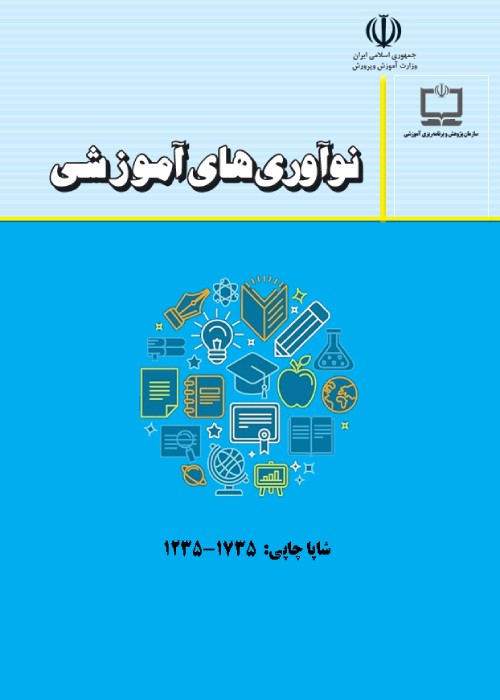A study on the probable impact of junior high school hidden curriculum on student achievement: Presenting an efficient model
Author(s):
Abstract:
The present study was an attempt to investigate the probable role of the hidden curriculum on academic achievement of female junior high school students and to providea plausible model to decrease the negative side effects of the mentioned curriculum. It was a mixed method research. The research population comprised of all female junior high school students studying at public schools; namely, forty-one schools in educational district 1 at north part of Tehran. Simple random sampling was used to select the sample (overall, nine schools), which was carefully investigated for 8 months. The required data was collected using three different instruments: 1. researcher-made observation checklist together with relevant likert scales and anecdotal records, 2. researcher- made interview with standardized open questions and informal conversations and 3. students’ academic achievement mean. Several statistical procedures including t-test, one-way repeated measure ANOVA, Scheffe’s test, Pearson product moment coefficient of correlation, and multiple regression analysis were used to analyze the data. The coefficient of correlation between hidden curriculum and student achievement variables was 0.50 which was not meaningful at 0.05 level of significance. With reference to R2, the data showed that 24.77% of students’ academic achievement have been influenced by hidden curriculum. The results showed that in most observed schools and classes, students were influenced by unintended and negative effects of the hidden curriculum. These effects had direct and indirect negative and long-lasting influence on their deep learning. While paying attention to psychological learning approaches and the hidden curriculum, to decrease the negative consequences of this curriculum, a model was designed and suggested consisting of eight components: 1. theoretical foundation, 2. philosophy, 3. fundamental variables, 4. dimensions, 5. objectives, 6. principles, 7. procedure, and 8. feedback and evaluation system.
Language:
Persian
Published:
Quarterly Journal of Educational Innovations, Volume:10 Issue: 37, 2011
Page:
71
magiran.com/p908570
دانلود و مطالعه متن این مقاله با یکی از روشهای زیر امکان پذیر است:
اشتراک شخصی
با عضویت و پرداخت آنلاین حق اشتراک یکساله به مبلغ 1,390,000ريال میتوانید 70 عنوان مطلب دانلود کنید!
اشتراک سازمانی
به کتابخانه دانشگاه یا محل کار خود پیشنهاد کنید تا اشتراک سازمانی این پایگاه را برای دسترسی نامحدود همه کاربران به متن مطالب تهیه نمایند!
توجه!
- حق عضویت دریافتی صرف حمایت از نشریات عضو و نگهداری، تکمیل و توسعه مگیران میشود.
- پرداخت حق اشتراک و دانلود مقالات اجازه بازنشر آن در سایر رسانههای چاپی و دیجیتال را به کاربر نمیدهد.
In order to view content subscription is required
Personal subscription
Subscribe magiran.com for 70 € euros via PayPal and download 70 articles during a year.
Organization subscription
Please contact us to subscribe your university or library for unlimited access!


